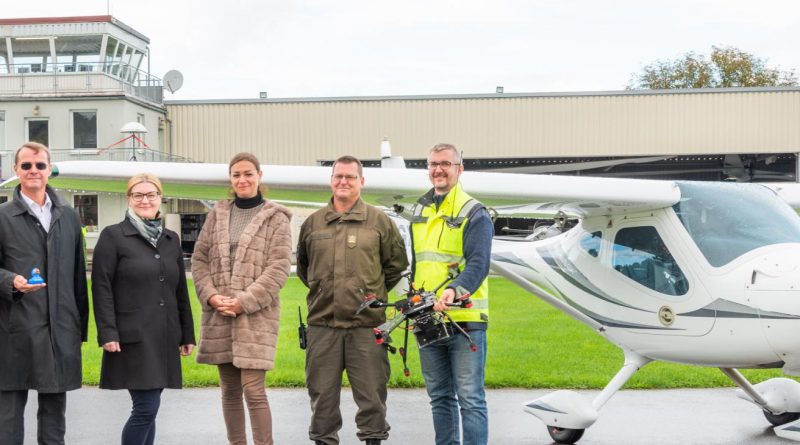Successful drone test flights in Austria for EU project GOF 2.0
| Finland / Austria, 3rd October 2022 Successful drone test flights in Austria for EU project GOF 2.0 The drone market is growing rapidly and unmanned aerial vehicles, including air taxis, are the next milestone for the development of airborne digital mobility technologies. The SESAR 3 JU project GOF 2.0 Integrated Urban Airspace VLD is developing solutions for the safe and sustainable integration of unmanned aerial vehicles and air taxi operations in urban airspace. In September, an important series of tests took place in Austria, the findings of which mark a milestone for further development. Fifteen partners from both the scientific community and the drone and aviation industry are working together in the EU project GOF 2.0 to enable safe, orderly, and efficient control of unmanned aerial systems in a manned aviation environment. Interoperability is at the forefront, enabling secure (data) communication between airborne and ground-based systems. This creates a “system of systems” that combines classic air traffic management and new and improved drone-specific services. The international consortium consists of: Estonian Air Navigation Services (EANS), Dimetor, Airbus Urban Mobility GmbH, Aviamaps, CAFA Tech, DroneRadar, EHang, Fintraffic ANS, Frequentis, PCSS Poznańskie Centrum Superkomputerowo-Sieciowe, Polish Air Navigation Services Agency, Robots.Expert, Threod Systems, Unmanned Life, Vaisala. The basis for an economical and scalable use of this new type of airborne mobility technology is the further integration of airport and port infrastructure, public transport, and logistics centers. In all use cases, the focus is on increasing efficiency compared to ground-based technologies and supporting a seamless transport chain between urban areas and the airports while taking into account the highest safety requirements. The integrations between partner systems developed as part of the project will be validated in various European countries together with the air traffic control authorities since April 2022. St. Georgen am Ybbsfeld Airport – not far from Amstetten / Lower Austria – was chosen for the Austrian validation. In this trial, among other things, automated parcel delivery at low-altitude and its safe interaction with air taxi flights and conventional air traffic were extensively tested as an example of a realistic use case. “It is of utmost importance that we can integrate drone traffic control systems directly into our air traffic management systems and ensure a safe and smooth operation,” explains Günter Graf, Vice President New Business Development and Innovation at Frequentis, the Austrian GOF 2.0 partner and host of this validation. “Many thanks to our partners for the good cooperation and their attendance with us in Austria. The team is working excellently, and the results are promising.” The results of the GOF2.0 demonstrations underline the technical possibilities as well as the future challenges to integrate simultaneous unmanned flights into urban airspace shared with manned aviation based on the European Commission’s initiative to integrate drones into the European airspace.. “GOF2 demonstrations highlight the importance of integrating U-space information directly into drone operator mission control systems“, says Jonas Stjernberg, SVP and Partner at Robots.Expert, and continues, “the biggest challenge for the industry and regulators is to ensure that U-space systems are interoperable on a European level.” This project has received funding from the SESAR 3 Joint Undertaking under the European Union’s Horizon 2020 research and innovation programme under grant agreement No 101017689. More information can also be found on the project website: www.gof2.eu. |
| For more information, please visit www.frequentis.com |




